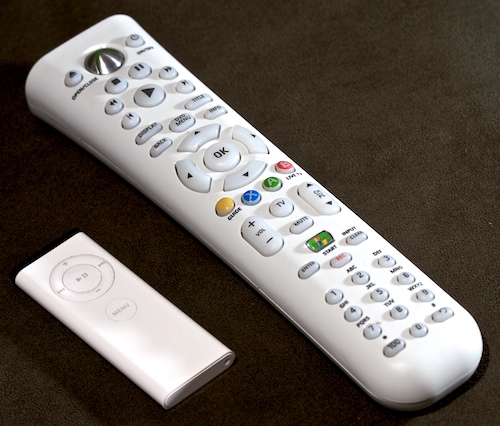I somewhat agree with joker here that for mtion controls to be succesful, they should be as far away from the current hardcore console gaming experience as possible. It should be SIMPLE, like the wii.
I think the move controller has way too many buttons, all it needs is the trigger, the move button and PS button. no need for select, start, and the square triangle circle x buttons. If you want to cater to the hardcore, just have more buttons on the subcontroller, not on the move controller that you must include with every ps3.
Sony makes great hardware, they just don't have the right focus, unfortunately. Casual people want SIMPLE and intuitive games. Natal is intuitive and so is moving a wand with a couple buttons at max. Having 8 buttons will still intimidate the consumer.
...except most of the games they have shown thus far aside from Socom use none of the buttons at all except the trigger..DOH!
I fail to understand how you folks are so confident that Natal is intuitive and great, when pretty much none of us have seen anything more than vapor ware and a buggy implementation on Burnout Paradise. I'll be excited for Natal when I actually see software this E3 that doesn't involve flailing.
All of this talk about "focus" and "misdirection" blah blah. It's filled with almost nothing but preconceived notions of ill-will toward Sony products, and for what? Because they launched a $600 unit with some arrogance? Give me a break. Move is just as well planned, marketed, and directed as Natal, and they actually have software to show for it way earlier than Microsoft. I am just not getting the same vibe from Move as you are, but then again I've been actively following both of these products, not just one of them...
Edit: For instance, here is the Natal Site for Microsoft:
http://www.xbox.com/en-US/live/projectnatal/
Full of vaporware and concepts that look neat in a video, but their application in "real life" remains to be seen (i.e. dress up, saying goodnight to turn off the console, etc). The video goes from a kid playing a fighting game, to a racing game, to a flailing game, to a skateboard game, and finally a dress up teen simulator or something that we all know will never happen this generation.
Basically, it shows just as much "lack of direction" (which I don't think it true, but apparently you all should) as Sony's product.
Then we've got the PS Move site:
http://us.playstation.com/ps3/playstation-move/index.htm
Clearly it shows the same variety as natal, with almost none of the games using complex buttons or movements, etc. Very simple, and EVERYTHING is clear about the product and what it is. Not to mention Sony goes out of their way to include lots of videos about Move, behind the scenes, and other things to help the consumer (or people visiting the site) understand it.
So please, all of you, tell me HOW this lacks focus, just because you're "disappointed" (read: being jaded about games) that it's "Wii-too" and not "OMG MINORITY REPORT WITH MILO!!". Because as far as I can tell, Move is the product that has clearly shown us it works, that Sony knows what they want to do with the product, and they're doing their best to get 3rd parties involved as well as some good 1st party software. I think that's more comforting at this point than Natal with nothing but Vaporware.
Now, I have high hopes just as the rest of you do for Natal, but I'm not foolish enough to champion it when we've seen almost no software and have heard very little about it.

